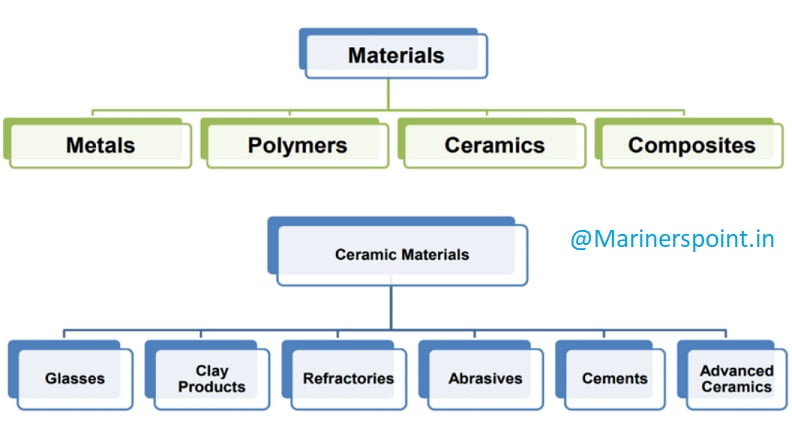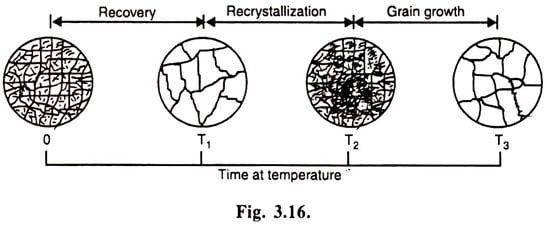In this article we will discuss about Alloy Steel, which are very commonly used in Industries as well as in da to day life. Starting with the definition we will look into its composition, types, and uses and properties.
What is Alloy Steel ?
Alloy steel may be defined as steels to which elements other than carbon are added in sufficient amounts to produce improvements in properties.
The most common alloying elements added to steel are chromium, nickel, manganese, silicon, vanadium, molybdenum, tungsten, phosphorus, copper, titanium, zirconium, cobalt, columbium, and aluminium. Each of these elements confers certain qualities upon the steels to which it is added. They may be used separately or in combination to produce desired characteristics in the steel.
Alloy steel properties : Like carbon, a number of alloying elements are soluble to produce alloys with improved strength, ductility, and toughness. Also carbon besides forming an intermetallic compound with iron, combines with many alloying elements and form alloy carbides. These alloy carbides as well as iron-alloy carbides are usually hard and lack in toughness.
Some alloying elements are added to prevent or restrict grain growth. Aluminium is considered the most effective in this respect. Others are zirconium, vanadium, chromium, and titanium. Structurally, the addition of alloying elements almost always affects the austenite-ferrite transformation mechanism by changing the temperature at which the transformation from gamma to alpha iron takes place. Some alloying elements lower and some raise the critical temperature.
The compositional and structural changes produced by alloying elements change and improve the physical, mechanical and processing properties of iron and steel. In general, alloy steels can give better strength, ductility, and toughness properties that cannot be obtained in carbon steel. Consequently, the production, design engineer should consider alloy steels in designs subject to high stresses and /or impact loading.
Almost all alloy steels are produced with fine-grained structures. Fine-grained steels have less tendency to crack during heat treatment but have better toughness and shock-resistance properties. Coarse-grained steels exhibit better machining properties and may be hardened more deeply than fine-grained steels.
Which Alloy Steel is used to make Permanent Magnet ?
1. Silicon steel
2. Vanadium steel
3. Manganese steel
4. Cobalt steel
Right answer is 4. Cobalt steel
Alnico alloy, an iron alloy with aluminum, nickel and cobalt. Alnico alloys steel used to make strong permanent magnets. They are widely used in industrial and consumer electronics.
Which Alloy Steel is used for making Precious Instruments ?
1. Silicon steel
2. Manganese steel
3. Vanadium
4. Invar steel
Right answer is 4. Invar steel
Alloy Steel Composition

Effects of Alloying Elements
In order to select the alloy steel that is best suited for a given design, the effects of primary alloying elements must be taken into account. They are :
Nickel provides toughness, corrosion resistance, and deep hardening.
Chromium improves corrosion resistance, toughness and hardenability.
Manganese deoxidizes and, contributes to strength and hardness, decreases the critical cooling rate.
Silicon deoxidizes and promotes resistance to high temperature oxidation, raises the critical temperature for heat treatment, increases the susceptibility of steel to decarburization and graphitization.
Molybdenum promotes hardenability, increases tensile and creep strength at high temperature.
Vanadium deoxidizes and promotes fine-grained structure. Copper increases resistance to corrosion and acts as strengthening agent.
Aluminium deoxidizes and, promotes fine-grained structure, and aids nitriding
Boron increases hardenability,
A summary of the effects of the chief alloying elements in steel is given in Table 4.6.
Low Alloy Steel
A low alloy steel is a metal alloy made out of steel and additional metals that have desirable qualities. About 1% to 5% of alloying elements are present in low-alloy steel. As a result, it has precise chemical compositions that provide improved mechanical qualities to resist corrosion.
During manufacture, low alloy steels are usually heat treated, normalised, and tempered. They can also be welded. Weld heat treatment, on the other hand, is required to prevent weld cracking.
Low-alloy steels provide a number of advantages over mild steel, including:
- Exceptional yield strength
- Capable of withstanding extreme temperatures
- Good creep resistance
- Resistance to oxidation
- Resistance to hydrogen
- Ductility at low temperatures
Alloy Steel Types or Classification of Alloy Steel
Alloy steels may be classified according to their chemical composition, structural class and purpose.
Classification According to Chemical Composition
In this aspect alloy steels are divided into Three-component steels, containing one alloying element in addition to iron and carbon : Four component steels, containing two alloying elements, etc.
Classification According to Structural Class
On the basis of the structure obtained when specimens of small cross-section are cooled in air. Alloy steels may be classified as: 1. Pearlitic 2. Martensitic 3. Austenitic 4. Ferritic and 5. Carbidic.
Classification According to Purpose
As to the uses for which their properties fit them alloy steels can be classified :
1. Structural steels 2. Tool steels 3. Steels with special physical properties.
1. Alloy Structural Steel
They are divided into three groups : low alloy (up to 5 per cent alloying elements) , medium alloy (over 5 per cent) and high alloy (more than 10 per cent). IS : 7598-1974.
Alloy structural steels are widely employed in engineering industry for parts that are subject to They have a more favourable set of mechanical properties than carbon both static and dynamic loads in operation. steels especially for articles of large cross-section. The alloying elements strengthen the ferrite, which is the chief constituent in the structure of these steels; increase the hardenability, refine the grain size; and increase the resistance to softening on heating to moderate temperatures.
The principal alloying elements in structural steels are chromium, nickel, and manganese. Tungsten, molybdenum, vanadium, and titanium are not usually employed as independent additions, They are added in conjunction with chromium, nickel and manganese.
2. Alloy Tool Steel
They are employed in tool manufacture in cases when the tool life provide by carbon steel is insufficient.
The tool industry is supplied with :
1. Low alloy steels which retain high hardness at temperatures up to 250°C.
2. Medium and high alloy steels, e.g., high speed steels which retain high hardness at temperatures up to 620°C. They acquire high cutting properties only after suitable heat treatment.
Alloy tool steels are smelted in open-hearth and electric furnaces and belong to high quality classes.
3. Alloy Steels with Special Physical Properties
They may be divided into several groups as (1) Stainless steels (2) Scale and heat Resisting steels (3) Wear Resisting steels (4) Magnet steels and (5) Steels with special thermal properties such as creep resisting steels, etc.
Special Alloy Steel
In service situations where steels must resist high temperatures, corrosion, shock, etc. special alloy steels are invaluable. The most important groups of special alloy steels are described in the following discussions.
Magnet Steels
High cobait steels, when correctly heat treated, are frequently used in the making of permanent magnets for magnetos, loud speakers and other electrical machines and instruments. Steels having compositions 15 to 40 per cent cobalt 0.4 to 10 per cent tungsten possess improved magnetic properties.
Heat Resisting Steels
Heat resisting steels are those which are particularly suitable for working at high temperatures . Such steels must resist the influences which lead to the failure of ordinary steels when put to work under high temperature. A steel controlled (developed for the stainless series) provides a useful combination of nonscaling and strength-retaining properties together with resistance to acid corrosion comparable with that of stainless steels.
Alloy steels containing 23 to 30 per cent chromium with the carbon less than 0.35 per cent are used principally for service at temperatures between 815°C and 1150°C. Furnace parts, annealing boxes and other equipments requiring resistance to high temperatures are often made of these steels.
Shock Resisting Steel
Shock resisting steels are those which resist shock and severe fatigue stresses. One grade of steel for this purpose contains 0.50 per cent carbon, 2.25 per cent tungsten, 1.50 per cent chromium and 0.25 per cent vanadium. Another grade of shock resisting steel, known as silicon manganese steels, contains 0.55 per cent carbon, 2.00 per cent silicon, 0.80 per cent manganese, and 0.30 per cent molybdenum. This kind of steel is mainly used for leaf and coil springs.
Stainless Steel
Stainless steels are essentially those containing chromium, together with other elements such as nickel, and are grouped as under.
Austenitic stainless steel. Probably the most important under this group is that containing 15 to 20 per cent chromium and 7 to 10 per cent nickel. A steel containing 18 per cent chromium and 8 per cent nickel is very widely used and is commonly referred to as 18/8 stainless steels.
Martensitic stainless steel. This group often termed plain chromium types of stainless steel, which contain 10 to 14 per cent chromium and, with the odd exception, have no other major alloying element. These steels are all hardenable by heat treatment.
Ferritic stainless steel. This group contains mainly 14 to 18 or 23 to 30 per cent chromium again with no other major alloying element. They cannot be hardened by heat treatment.
Maraging Steel
They are iron based alloys containing 18 Ni 8 Co 5 Mo with small amounts of Al and Ti and less than 0.03 per cent C. The strength is maintained with increase in section thickness and also up to 350°C, These steels are used for air frame and engine components, injection moulds and dies.
On cooling from the austenitic condition the alloy transforms to a fine lath type martensite, and precipitation hardening is induced by maraging at 480°C.
The steels have high fracture toughness due to a combination of fine grain size of the martensite and the high dislocation density, leading to fine precipitation.
High Speed Steel
High-speed steels (HSS) get their name from the fact that they may be operated as cutting tools at much higher cutting speeds than is possible with plain carbon tool steels. High-speed steels operate at cutting speed 2 to 3 times higher than for carbon steels.
When a hard material is machined at high speed with heavy cuts, sufficient heat may be developed to cause the temperature of the cutting edge to reach a red heat. This temperature would soften carbon tool steel containing even up to 1.5 per cent carbon to the extent of destroying their cutting ability. Certain highly alloyed steels, designated as high-speed steels, therefore, have been developed which must retain their cutting properties at temperatures up 600°C to 620°C.
We have tries to cover all the details of the topic Alloy Steel to a greater extent ranging from Definition, Composition, Properties, and Uses. If you like this article, please share it with your friends and give your feedback in the comment below.
Check Out Other Important Topics
Different Types of Steel & Constituents of Steel
Steel Making Process – Complete Overview with Flowchart
Cast Iron – Properties, Types & Uses
Recovery Recrystallization and Grain Growth – Working Process
Constrained Motion – Definition, Types, Examples, Images
| IC Engine | Important PDFs | Boilers | Synergy Maritime Exam | Naval Arch | MEO Class 4 |
| Interview Questions | Difference Between | Types of Pumps | Auxiliary Machines | Types of Valves | Home |



